If you want to know more information (such as product/process price, etc.), please contact us 24-hour telephone
In the field of gold mine development, the mining process often determines the overall success or failure of a project. Data shows that mining costs account for approximately 40% of the total investment in a mine, significantly higher than the 8%–10% associated with the beneficiation process.
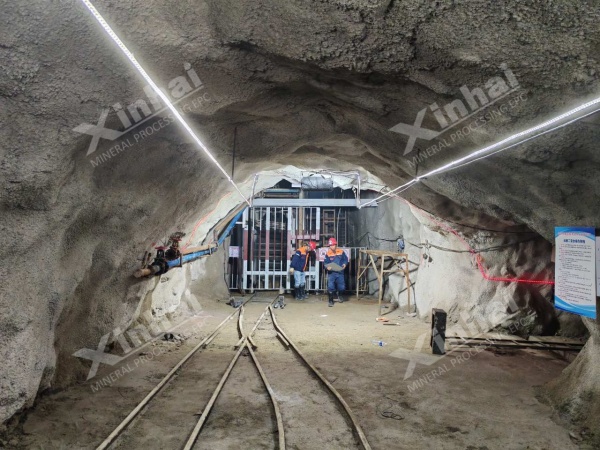
Underground mining is the dominant method used in gold extraction, characterized by high capital investment and long construction cycles. Given such substantial construction costs, it is especially critical to design a scientific and reasonable mining process.
In this article, we will introduce the selection of gold mining methods, the underground mining process for gold deposits, and Xinhai’s advantages in gold mining services.
The selection of a gold mining method primarily depends on the geological characteristics of the deposit. Before determining the appropriate method, we require customers to provide a complete geological report officially filed with the Ministry of Natural Resources. This report should include detailed investigation and exploration data.
Based on this information, our technical team uses 3D modeling to comprehensively visualize the ore body’s spatial geometry, surrounding rock stability, hydrogeological and geotechnical conditions, ore grade distribution, and overall economic value.
The mining method is selected according to the 3D geological model. The three main mining methods are:
Open-pit mining: Suitable for shallowly buried ore bodies (<300 m) with limited vertical extent. This method offers fast return on investment and relatively low operational costs.
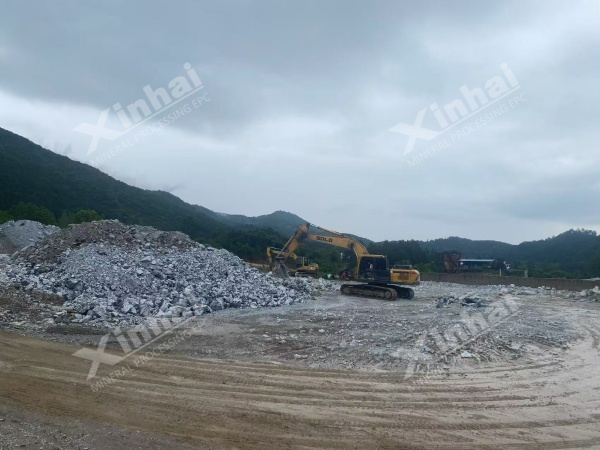
Combined open-pit and underground mining: Ideal for ore bodies that start shallow but extend to greater depths. The shallow portion is mined using open-pit methods first, then transitions to underground mining for deeper resources.
Underground mining: Applied to deeply buried ore bodies with no surface mineralization. While this method requires higher initial investment, it enables access to high-value deep ore and offers favorable economic returns.
Once underground mining is selected, the specific mining technique must be further optimized based on the ore body’s shape and structural characteristics. The matching principles are illustrated in the figure below.

With over 30 years of mine design experience, the Xinhai Mining technical team can accurately evaluate the comprehensive cost and safety risks associated with different mining methods. This ensures the selection of a scientifically sound and economically viable scheme while avoiding losses caused by improper design or later-stage adjustments.
· Select a vertical shaft or inclined shaft based on the mining depth. Generally, a vertical shaft is preferred when the depth exceeds 800 m.
· Construct stage transport levels, typically every 100–150 m of vertical interval.
· Equip essential infrastructure such as shaft headframes, hoisting systems, and ventilation shafts (a dedicated return air system is required).
· Conduct detailed engineering layout within the ore block.
· Excavate access structures such as manways, equipment shafts, drilling drifts, bottom tunnels, and cutting raises to provide the necessary working space for ore extraction.
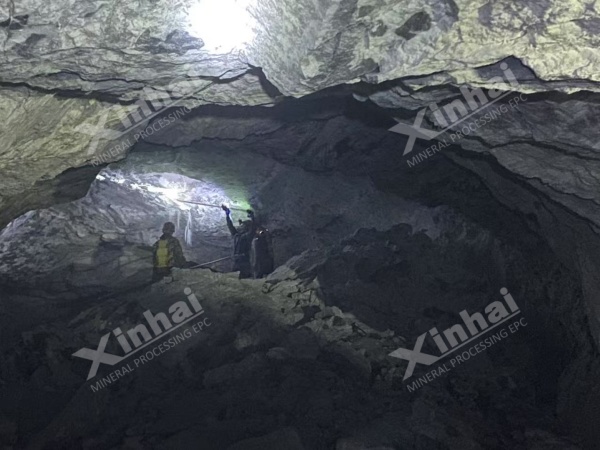
The main stoping methods include the open stoping method, cut-and-fill method, and caving method:
· Open stoping method: Includes methods such as the room-and-pillar method and sublevel stoping. Only regular pillars are left to support the roof in competent ore rock. This method is cost-effective and highly productive but is only applicable under stable geological conditions.
· Cut-and-fill method: Includes upward, downward, layered, and delayed filling techniques. The mined-out void (goaf) is promptly filled with backfill material such as waste rock or tailings mixed with a binder. This method offers good safety and ground control, making it suitable for complex ore body geometries.
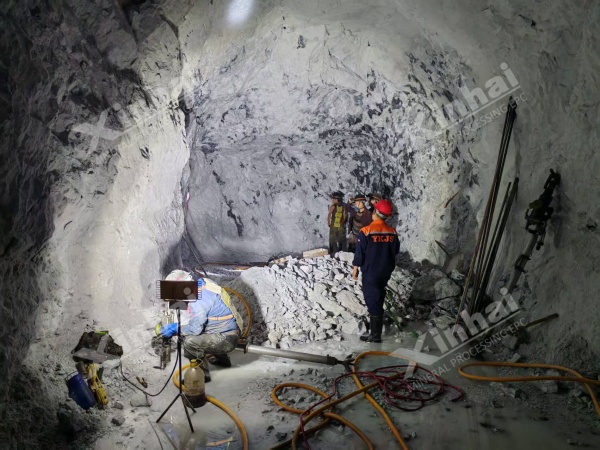
· Caving method: Includes methods such as sublevel caving with or without pillars. The ore and overlying rock are collapsed in a controlled manner. Strong ventilation and safety monitoring are critical during operation.
· After blasting, broken ore is transported from the stope using loaders or mine trucks, then transferred via ore passes and haulage drifts to the main shaft station.
· The ore is hoisted to the surface using skips or cages and dumped into surface ore bins. After preliminary crushing, the ore is transported to the beneficiation plant for further processing.
Xinhai holds a First-Class General Contracting Qualification for mine engineering construction—an official recognition of the company’s technical strength, management expertise, financial capacity, and industry reputation. This qualification lays a solid foundation for undertaking large-scale and complex underground gold mining projects.
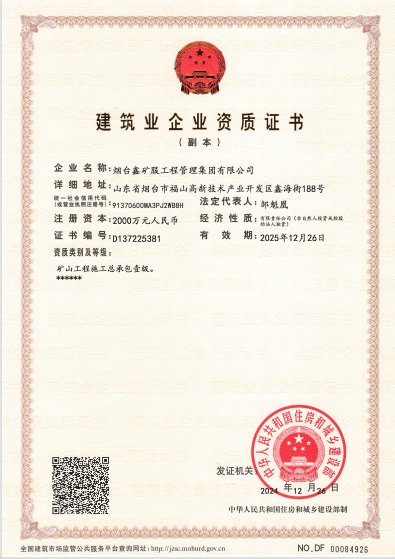
The Xinhai Mining Design Institute is staffed by more than 80 professional engineers, covering key disciplines such as mining, mineral processing, civil engineering, electrical engineering, automation, and structural engineering. These professionals are responsible for designing comprehensive mining plans tailored to customer needs. Throughout the design process, interdisciplinary collaboration ensures an optimized and integrated solution.
Our core experts have over 30 years of extensive design experience, and are highly familiar with both domestic and international mining standards and technologies. Guided by the principle that “No two mines are exactly the same,” we always develop customized design solutions based on ore body characteristics, geological conditions, and environmental requirements.
The core members of Xinhai’s construction team have more than 20 years of experience in underground mine construction and management. Many come from Cangnan County, Zhejiang Province—widely known as the “Hometown of China’s Mining Industry.” With years of front-line experience, they possess deep practical knowledge and refined construction skills.
At Xinhai, we believe time is efficiency. We implement a strict project scheduling and dynamic tracking system, and assign a full-time schedule control engineer at each construction site. This enables us to respond quickly to any issues and ensure timely resolution. With rational allocation of equipment and workforce, we guarantee on-time project delivery.
We utilize advanced mechanized and automated equipment in underground gold mining operations. Automated mining trucks, drilling rigs, and loaders improve construction efficiency and operational safety, while significantly reducing labor intensity for workers.
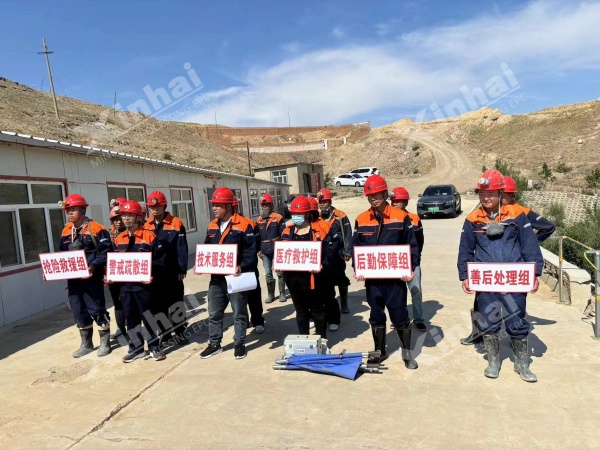
· Jiangxi Shun’an Mining – 500,000 t/a Wollastonite Project
Currently under efficient construction. We maintain close communication with clients and sales teams to ensure timely updates on project milestones.
· Zhangjiakou Sheng’an Mining – 4,000 t/d Molybdenum Project
Now in the intensive construction preparation phase. This project will fully showcase Xinhai’s comprehensive capabilities in large-scale underground mine development.
Conclusion
Founded in 1997, Xinhai Mining has nearly 30 years of industry experience. We are committed to delivering high-quality design solutions, skilled construction teams, modern operating models, and reliable project timelines.
Whether you are planning a new gold mine or upgrading an existing one, Xinhai offers full-process, one-stop mining services. Feel free to contact us for more information.